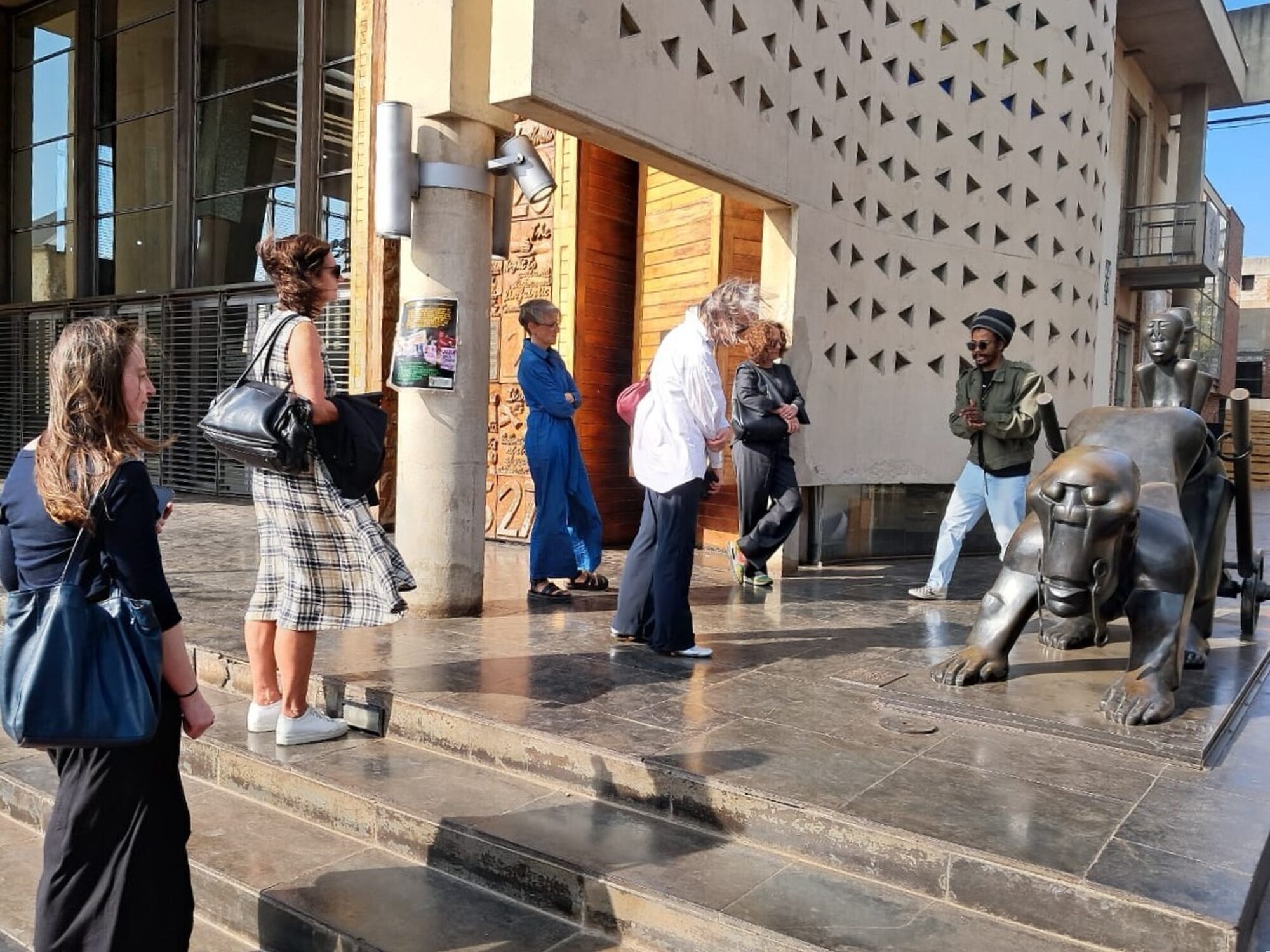Art, Memory & Justice: Highlights from our tours

Conversations in context
This past quarter, the CCAC team was delighted to welcome Acting Justice Savage for an Art and Justice Tour. As a returning official and former Trustee of the CCT until 2019, her insights into the historical memory embedded in the Court and Collection were invaluable, and her reflections on the artworks and current exhibitions left a lasting impression.
We also hosted a Dutch delegation, whose initiatives and perspectives on art, justice, and democracy sparked meaningful dialogue. Notably, it was through Dutch government support that Marlene Dumas’The Benefit of the Doubt tapestries were presented to the Court in 2001. These visits highlight the value of international partnerships and the universal resonance of the Collection. Furthermore, In July 2025, our Trust Manager, Catherine Kennedy, was honoured to be invited by the Goethe-Institut to the launch of the Africa–Europe Partnerships in Culture: Southern African Component. In September, the Goethe team visited the CCAC for a guided tour, exploring the history, stories, and artistic voices represented in the Collection.
Other highlights included the Wits School of Arts Museum Education group, who explored the curatorial team’s approaches, challenges, and successes in museum teaching, engaging with Dr Erica de Greef and her students. Bahlakoana, CCAC curator of Collection Care, and Dr de Greef highlighted that a single artwork is multilayered; its materiality, biography, and provenance offer rich opportunities for teaching across curricula. Georgia Papageorge’sThrough the Barrier (2004) and Dumile Feni’sHistory (1987) were cited as exemplary cases.
Furthermore, students from the Wits Medical and Health Humanities: Human Rights and Discrimination in Medicine and Healing course paid us a visit to investigate the intersections of art, health, and human rights. Co-hosted by the curatorial team and two Court clerks, the tour highlighted artworks addressing the Constitution’s role in health and human rights, prompting reflection on exclusion in healthcare and law during apartheid, and exploring how medicine and justice can restore dignity and equality. Reflecting on Constitution Hill’s history as a former prison, the students explored how the site, now home to South Africa’s Constitutional Court, embodies justice, healing, and dignity, and how history, art, and architecture collectively reflect human rights, transcendance, and healing.
Our Art and Justice Tours offer similar experiences to the public, a chance to explore how art and law intersect, and how creativity continues to shape our nation’s conscience. These free guided tours invite students, educators, scholars, and curious visitors alike to join this ever-evolving conversation.